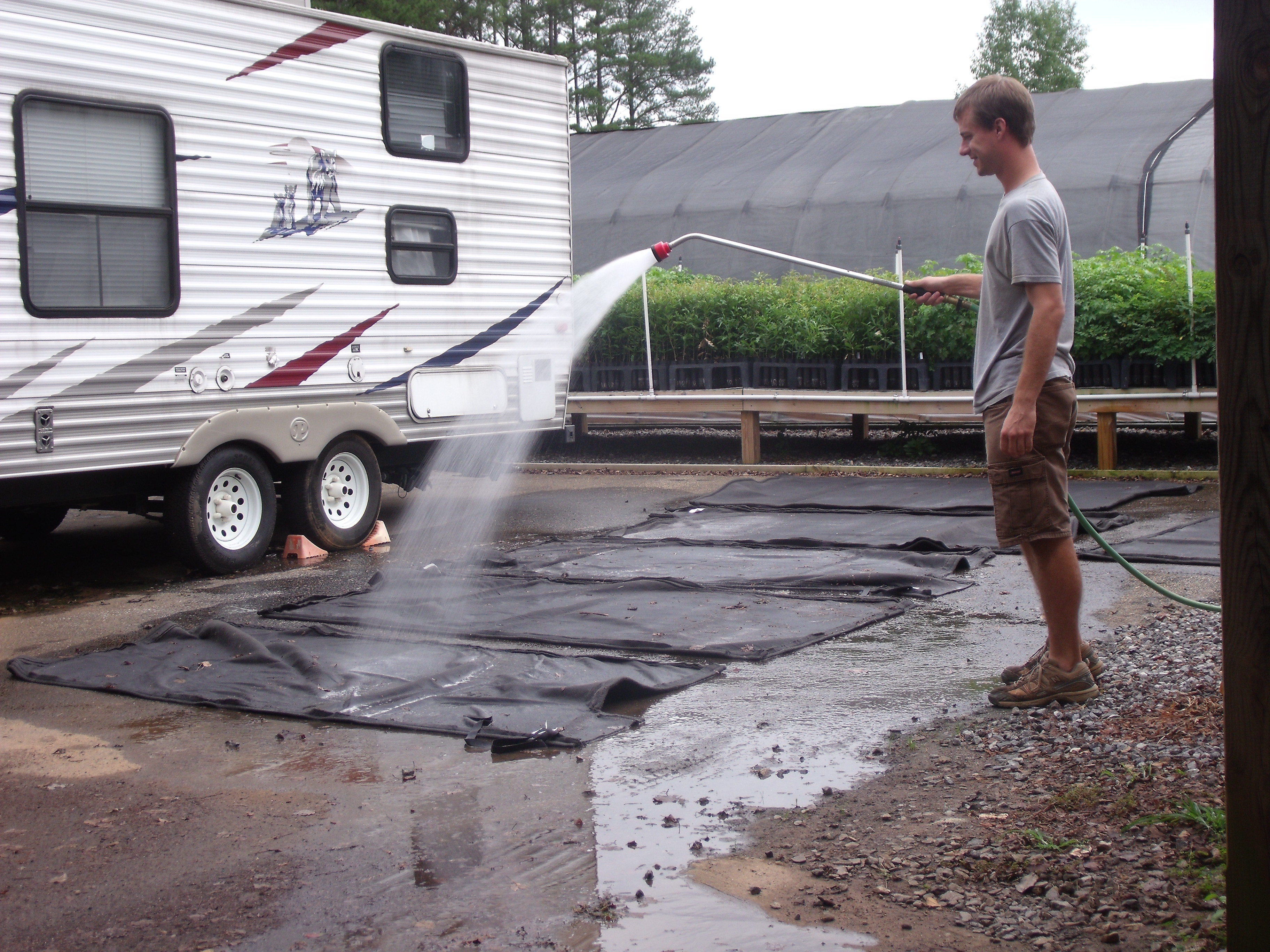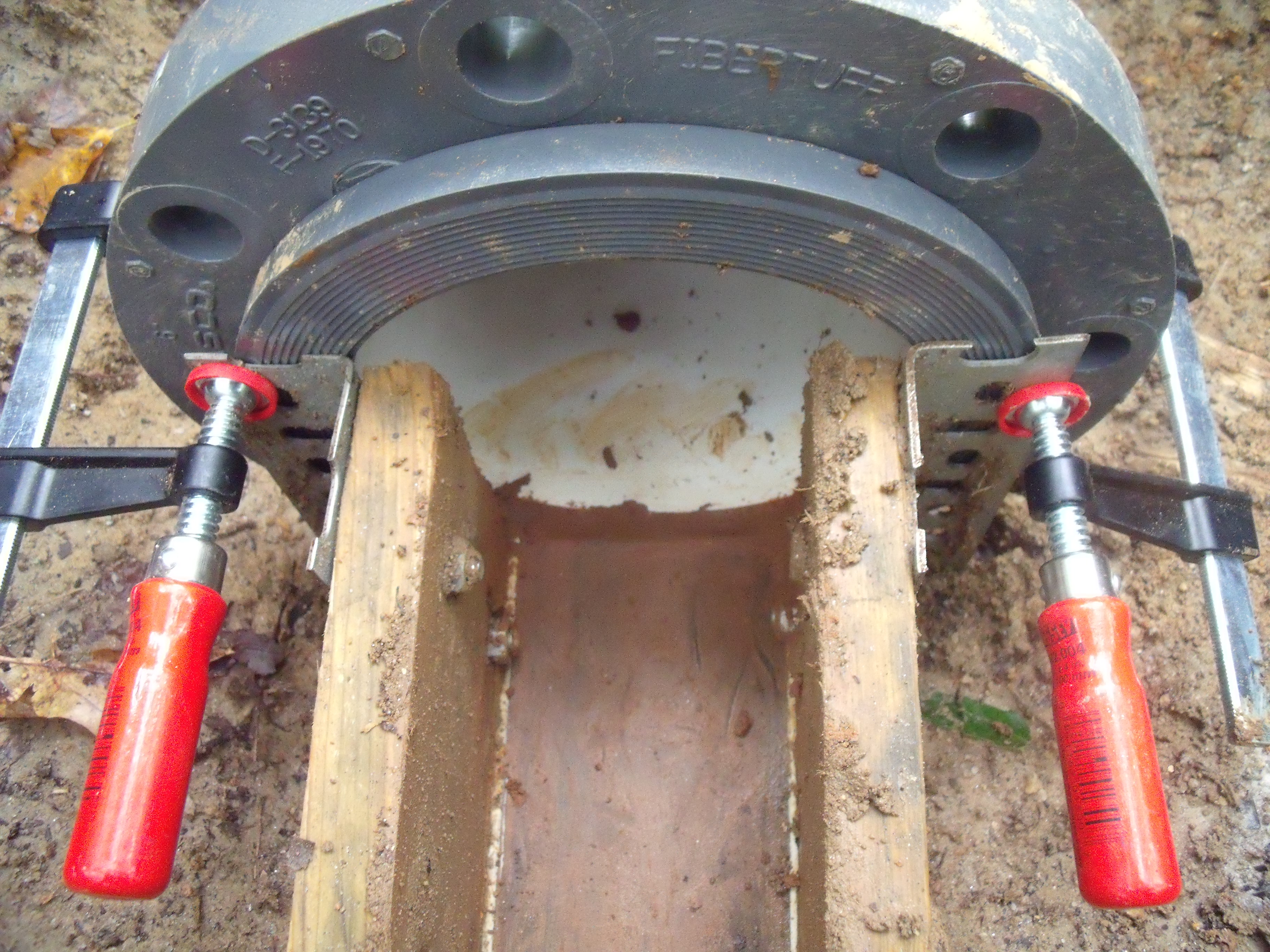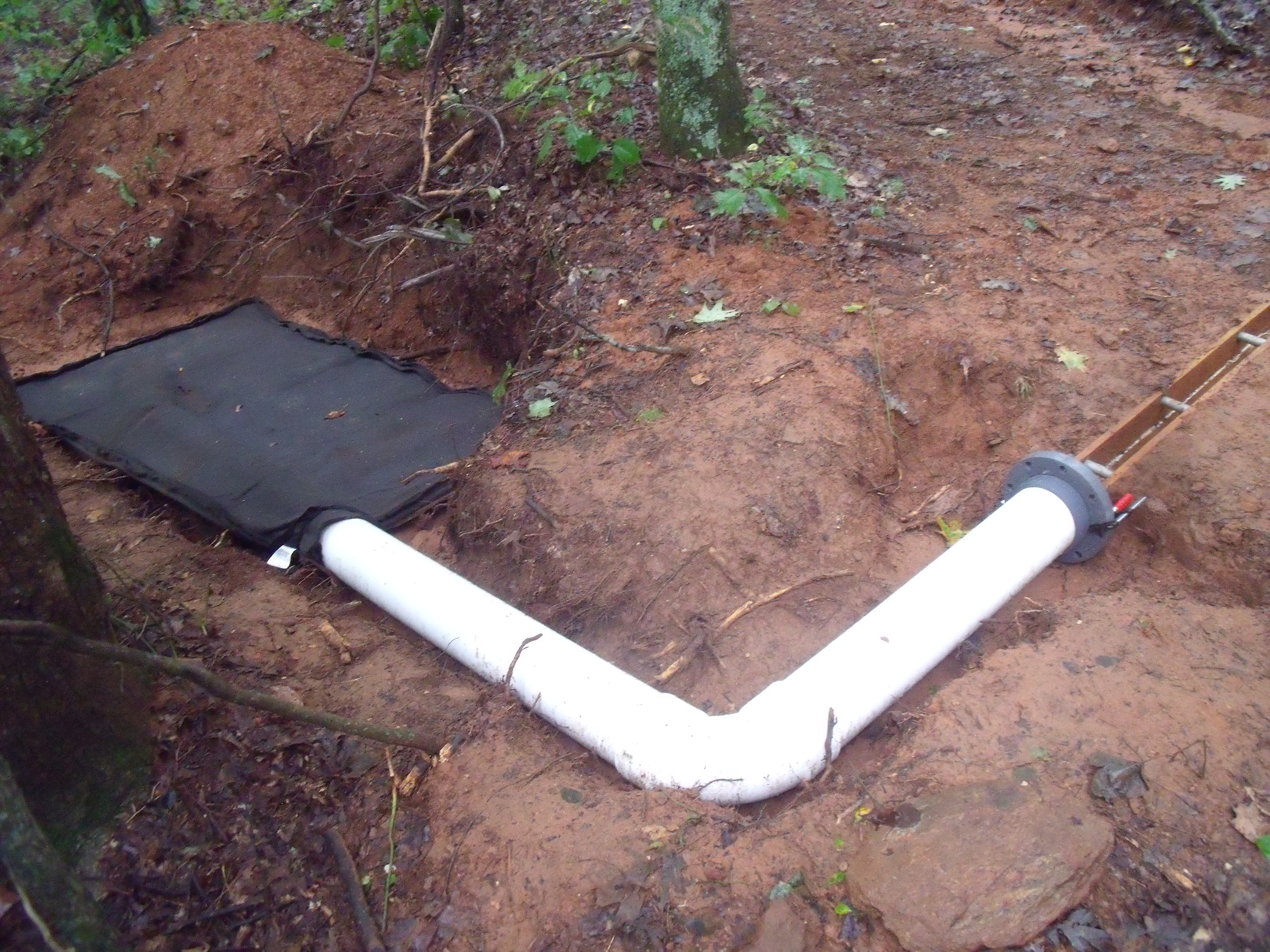Today I finished work on connecting sediment collection bags (aka Dirtbags) on six road approaches to stream crossings at the Reynolds Homestead Forest Resources Research Center. Rainfall simulations will be conducted on these sites to measure surface runoff, infiltration, and sediment loads associated with rain events of various return period intervals. The data obtained from these experiments will be used to evaluate the Water Erosion Prediction Program (WEPP) model for its performance in predicting surface runoff and soil erosion from forest road approaches to stream crossings. This research project will also provide much needed data regarding soil erosion rates from road approaches to stream crossings, where sediment delivery to streams is high. In addition, the importance of forest roads to stream water quality is exemplified by the recent Ninth Circuit Court decision that roads may no longer be exempt from NPDES permitting under the Silvicultural Rule and that roads are point sources of pollutants, such as sediment. http://www.maineloggers.com/business-impact/9th-circuit-decision-could-require-npdes-permits-on-logging-roads/
Important field work conducted this weekend included weighing Dirtbags under various moisture contents to correct future sediment weights and connecting Dirtbags to culverts via PVC pipe. We are currently up and running for monthly data at these six road approaches. The next phase of this project will include instrumentation of the road approaches with a network of rain gauges, a flume to measure surface runoff, and irrigation pipe in preparation of rainfall simulations.



